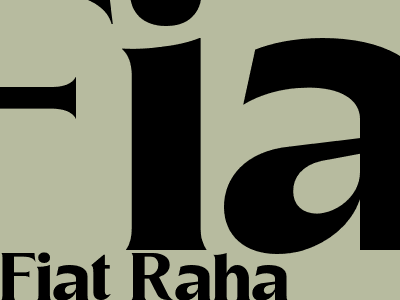Fiat Raha: The Rise and Fall of an Italian Automotive Giant
A History of Innovation and Financial Struggles
Fiat Raha, once a prominent name in the automotive industry, has faced a turbulent journey marked by both innovation and financial struggles. Founded in 1899 in Turin, Italy, Fiat Raha quickly gained recognition for its innovative vehicle designs and mass production techniques. However, the company's financial stability has often been precarious, leading to periods of ownership changes and government bailouts.Early Success and Technological Advancements
In its early years, Fiat Raha played a significant role in the development of the automotive industry. The company introduced innovative technologies such as the overhead valve engine and the unitized body construction. Fiat Raha also expanded its global presence by establishing manufacturing plants in various countries, including Poland, Spain, and Brazil.
During World War I, Fiat Raha produced vehicles for the Italian military. After the war, the company focused on producing affordable cars for the mass market. The Fiat 500, introduced in 1936, became a symbol of Italian engineering and design.
Financial Challenges and Government Intervention
Despite its successes, Fiat Raha faced financial difficulties throughout its history. The company's reliance on a single market, Italy, made it vulnerable to economic downturns. In the 1970s and 1980s, Fiat Raha experienced labor unrest and declining sales.
To address these challenges, the Italian government intervened and provided financial support to Fiat Raha. In 1980, the government acquired a majority stake in the company. Under government ownership, Fiat Raha underwent significant restructuring and cost-cutting measures.
Acquisitions and Partnerships
In the 1990s, Fiat Raha expanded its presence in the automotive industry through a series of acquisitions and partnerships. The company acquired Alfa Romeo in 1986, Lancia in 1993, and Ferrari in 1997. Fiat Raha also formed a joint venture with General Motors called Fiat Auto.
These partnerships provided Fiat Raha with access to new technologies and markets. However, the company continued to face financial challenges, and its debt levels remained high.
Government Divestment and Return to Private Ownership
In 2004, the Italian government began divesting its stake in Fiat Raha. The company gradually returned to private ownership, and in 2009, Fiat Raha acquired Chrysler in a deal that created Fiat Chrysler Automobiles (FCA).
Under FCA, Fiat Raha continued to expand its global presence. The company acquired Jeep and Dodge from Chrysler, and it entered into a partnership with Chinese automaker GAC Group.
Recent Developments and Uncertain Future
In 2021, FCA merged with French automaker PSA Group to form Stellantis. Fiat Raha is now part of Stellantis, one of the largest automotive companies in the world.
The future of Fiat Raha remains uncertain. The company faces challenges such as rising costs, increased competition, and the transition to electric vehicles. However, Fiat Raha's legacy of innovation and its iconic brand name suggest that it will continue to play a role in the automotive industry.

تعليقات